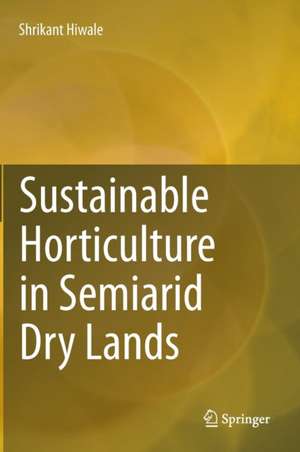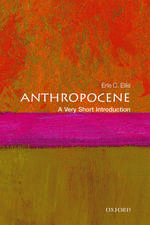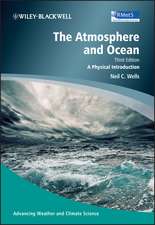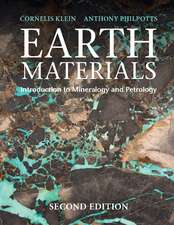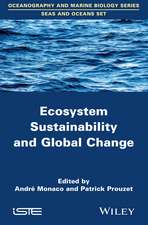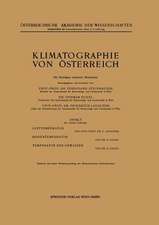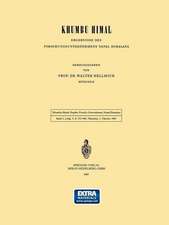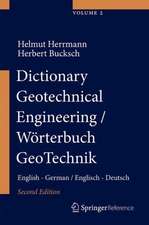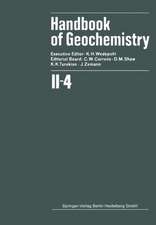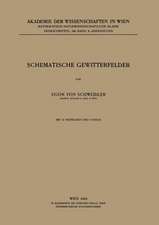Sustainable Horticulture in Semiarid Dry Lands
Autor Shrikant Hiwaleen Limba Engleză Hardback – 30 mar 2015
| Toate formatele și edițiile | Preț | Express |
|---|---|---|
| Paperback (1) | 417.35 lei 38-44 zile | |
| Springer India – 11 oct 2016 | 417.35 lei 38-44 zile | |
| Hardback (1) | 659.70 lei 6-8 săpt. | |
| Springer India – 30 mar 2015 | 659.70 lei 6-8 săpt. |
Preț: 659.70 lei
Preț vechi: 776.13 lei
-15% Nou
Puncte Express: 990
Preț estimativ în valută:
126.23€ • 131.80$ • 104.47£
126.23€ • 131.80$ • 104.47£
Carte tipărită la comandă
Livrare economică 05-19 aprilie
Preluare comenzi: 021 569.72.76
Specificații
ISBN-13: 9788132222439
ISBN-10: 8132222431
Pagini: 428
Ilustrații: XXXIV, 393 p. 123 illus. in color.
Dimensiuni: 178 x 254 x 28 mm
Greutate: 0.95 kg
Ediția:2015
Editura: Springer India
Colecția Springer
Locul publicării:New Delhi, India
ISBN-10: 8132222431
Pagini: 428
Ilustrații: XXXIV, 393 p. 123 illus. in color.
Dimensiuni: 178 x 254 x 28 mm
Greutate: 0.95 kg
Ediția:2015
Editura: Springer India
Colecția Springer
Locul publicării:New Delhi, India
Public țintă
Professional/practitionerCuprins
1. Introduction.- Part 1: Sustainable Horticulture.- 2. Problems of Horticulture in Semiarid rain fed areas.- 3. Scope and importance of Horticulture.- Part 2: Crop specific production technologies for semiarid rain fed areas.- 4. Ber (Zizyphus mauritiana Lamk.).- 5. Pomegranate (Punica granatum L.).- 6. Aonla (Emblica officinalis Gaertn.).- 7. Mango (Mangifera indica L.).- 8. Sapota [Manilkara achrus (Mill) Forsberg].- 9. Custard Apple (Annona squamosa L.).- 10. Phalsa (Grewia asiatica).- 11. Fig (Ficus carica).- 12. Bael (Aegel marmelos Correa.).- 13. Tamarind (Tamarindus indica L.).- 14. Guava (Psidium guajava ).- 15. Wood apple (Feronia limonia Linn.).- 16. Jamun (Syzygium cuminii).- 17. Chironji (Buchanania lanzan Spreng.).- 18. Mahua (Bassia latifolia Roxb.).- 19. Non Traditional crops: Cashew (Anacardium occidentale).- 20. Non Traditional crops: Manila tamarind (Tamarindus indica L.).- Part 3: Agro forestry species.- 21. Neem (Azadirachata indica).- 22. Leucaena (Leucaena leucocephala).- 23. Eucalyptus (Eucalyptus sp.).- 24. Bamboo (Bambusa vulgaris sp.).- 25. Pasture species-Cenchrus.- 26. Pasture species-Stylosanthes.- Part 4: Alternate land use systems semiarid rain fed areas (Horti –Agri, Horti-Silvi- Pastoral, Horti-silvi).- 27. Alternate Land use systems or sustainable Development.- Part 5: Post harvest studies.- 28. Prolonging shelf life of some semi arid fruits.- 29. Post harvest enzymatic activity of some arid zone fruits as influenced by chemical treatments and storage period.- 30. Value addition in underutilized fruits.
Notă biografică
Dr. S.S. Hiwale holds a brilliant academic career. He started as a Scientist at the IIHR Bangalore, where he later became a Principal Scientist in Horticulture. At present he is serving as a Principal Scientist at CHES in Vejalpur. He has worked on various semiarid fruits, examining aspects like germplasm conservation, evaluation and characterization; standardization of agro techniques for successful cultivation of these fruits under rainfed conditions. He has also worked on fruit-tree-based cropping system for semiarid rainfed areas and successfully developed cropping system models. He worked as a Lead Center Principal Investigator for the NATP Project “Develop Sustainable Agri-Horti-Pastoral System on Marginal Lands”. He is also Principal Investigator for the Project “Revolving Fund Scheme on Propagation Commercial Fruits”, which is intended to supply high-quality planting material. He is at present working as a Principal Investigator on the DST project “Enhancement of livelihood of tribal farm households of Panchmahals district in Gujarat through agricultural diversification”. He has also completed seven institutional projects and is now working on “value addition in semiarid fruits”. He has to his credit three new varieties, one each in Ber, Aonla and Pomegranate, and wrote a book entitled “The Pomegranate”. Apart from this he has guided four M.Sc. Agri (Horti) students and one Ph.D student. He has presented and published eleven lead papers at international/national symposium/seminars, seven research bulletins and five extension bulletins on various aspects of the cultivation of semiarid fruits, and has written ten book chapters on various aspects like breeding and agro techniques.
Textul de pe ultima copertă
This book discusses ways of increasing production/unit area by making full use of the soil and water under the harsh climatic conditions of semiarid areas. This leads to improved sustainability, increased availability of fresh produce, which is vital for human health and higher incomes for small and marginal farmers.
Arid and semiarid areas account for almost 70 per cent of the total cropped area of India. In these areas physical constraints like low and erratic rainfall, high temperature, high wind velocity, low fertility, poor soil structure, salinity of soil and ground water all limit reliable crop production. In the absence of any type of aggregation, the soils are highly erodible, lack structure and have a very coarse in texture with low water holding capacity. Intensive agricultural practices, increasing population pressure, climatic changes, environmental pollution, loss of biodiversity, soil erosion, salinization and water depletion are all threatening the sustainability of agriculture. In view of the mounting demand for food, it is vital to link enhanced food production with nutritional security, conservation of natural resources, increasing farmers’ incomes, employment generation through agricultural diversification.
Horticulture, particularly of fruit trees, can play a major role in solving the problem of nutrition, as fruits are rich source of vitamins and minerals and have antioxidant properties. Fruit trees, which are mostly deciduous, add leaf litter to the soil, and this ultimately helps to improve the condition of the soil. In addition, fruit trees are known to reduce soil erosion and reduce run off. The trees also play a major role in purifying the environment as they are the known carbon sequesters. Fruit-tree cultivation is a profitable preposition. There is no scope to increase the land surface; all increase in productivity therefore has to be from the available land. This means introducing cropping systems that can meet the basic food, fodder and fuel requirement of farming families.
Arid and semiarid areas account for almost 70 per cent of the total cropped area of India. In these areas physical constraints like low and erratic rainfall, high temperature, high wind velocity, low fertility, poor soil structure, salinity of soil and ground water all limit reliable crop production. In the absence of any type of aggregation, the soils are highly erodible, lack structure and have a very coarse in texture with low water holding capacity. Intensive agricultural practices, increasing population pressure, climatic changes, environmental pollution, loss of biodiversity, soil erosion, salinization and water depletion are all threatening the sustainability of agriculture. In view of the mounting demand for food, it is vital to link enhanced food production with nutritional security, conservation of natural resources, increasing farmers’ incomes, employment generation through agricultural diversification.
Horticulture, particularly of fruit trees, can play a major role in solving the problem of nutrition, as fruits are rich source of vitamins and minerals and have antioxidant properties. Fruit trees, which are mostly deciduous, add leaf litter to the soil, and this ultimately helps to improve the condition of the soil. In addition, fruit trees are known to reduce soil erosion and reduce run off. The trees also play a major role in purifying the environment as they are the known carbon sequesters. Fruit-tree cultivation is a profitable preposition. There is no scope to increase the land surface; all increase in productivity therefore has to be from the available land. This means introducing cropping systems that can meet the basic food, fodder and fuel requirement of farming families.
Caracteristici
This book will be useful in increasing the production area in semiarid regions by making full use of available soil and water
It will also help in improving the sustainability as well as the availability of fruits along with increasing the income of the small and marginal farmers
It addresses the risk issues, like soil nutrient levels, leaf litter, organic matter, and salinity and covers all the essential components for the publication in the correct sequence; from ground to market
It will also help in improving the sustainability as well as the availability of fruits along with increasing the income of the small and marginal farmers
It addresses the risk issues, like soil nutrient levels, leaf litter, organic matter, and salinity and covers all the essential components for the publication in the correct sequence; from ground to market
